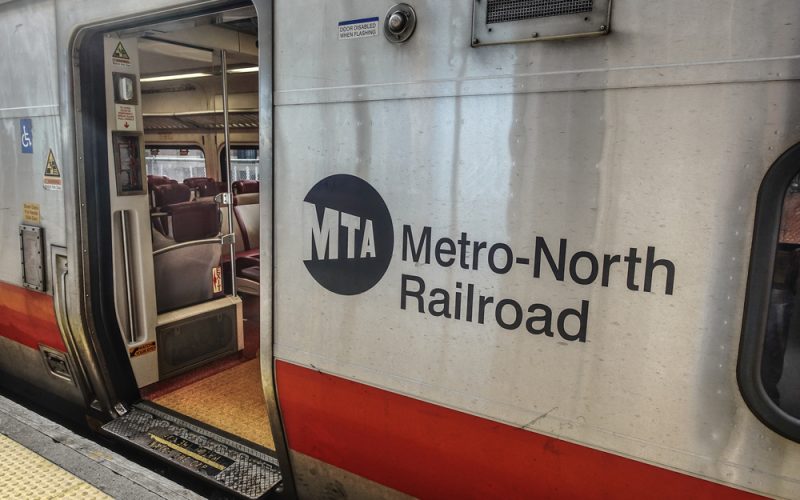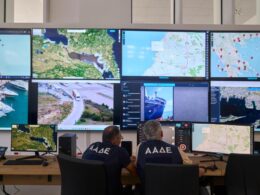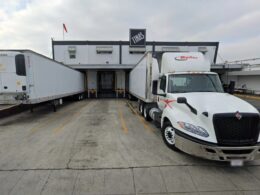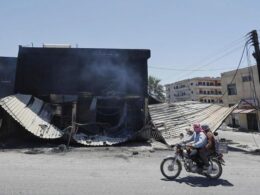Full Metro-North service in the East Bronx will be delayed again, this time until 2030, as Amtrak and MTA continue to joust over the project’s schedule, transit officials said Monday.
But MTA brass say they have a plan to run partial service along the line by 2027 — if Amtrak plays ball.
The Penn Access project — construction on which began in earnest in 2023 — is aimed at opening up a branch of Metro-North service along Amtrak’s Hell Gate line of the Northeast Corridor, connecting to Metro-North’s New Haven line from Penn Station and making stops at four new stations in the South Bronx along the way.
The work requires doubling capacity along the Hell Gate line, from two passenger tracks to four. MTA has agreed to overhaul the existing Amtrak tracks as well, while performing overdue upgrades to the overhead power lines and the substations that feed them.
“That’s the majority of the Penn Access budget,” MTA’s construction head, Jamie Torres-Springer, said Monday.
But shortly after ground was broken on the project in December 2022, MTA officials said the project would be delayed more than six months because of problems getting access to the Amtrak tracks.
MTA officials have continued to privately grouse that Amtrak personnel shortages have kept Metro-North crews from being able to schedule the necessary work.
Tension between the two railroads came to a head earlier this month when MTA Chairman Janno Lieber, at an unrelated press conference, called the delays “Amtrak being Amtrak,” adding, “The people in Co-op City are waiting for a goddamn train.”
In a presentation to the MTA’s board on Monday, Torres-Springer said the past two years have involved getting far fewer outages — weekends where Amtrak holds trains from running to allow for work — than MTA requested.
“Amtrak was unable to provide outages — you need outages to get work done,” The construction boss said.
In 2022 and 2023, only seven of 48 requested outages were granted, according to a consultant hired by the MTA.
“That sent the project spiraling off in the wrong direction,” Torres-Springer said.
Even when Amtrak started granting outages to allow MTA crews to get to work, Torres-Springer continued, the Amtrak foremen required to supervise the work didn’t regularly show up.
“Since the 1930s, intercity rail trains have been passing by the East Bronx neighborhoods … without stopping,” Torres-Springer said.
When complete, the project will bring trains to four new Bronx stations: Hunts Point, Morris Park, Co-op City, and Parkchester/Van Nest.
MTA estimates that that full completion will now take until 2030.
But Torres-Springer said Monday that, with Amtrak’s assistance, they hope to be able to operate a small portion of the eventual Metro-North service prior to the project’s total completion.
“We have worked with Metro-North to develop a plan that allows service to still commence in 2027,” he said.
Under that scheme, Metro-North would begin running service on the existing pair of tracks by the end of 2027, utilizing two temporary stations — Co-op city and Morris Park — and a completed permanent Parkchester/Van Nest station.
“Currently, Amtrak runs at most, four trains an hour on the Hell Gate Line, two in either direction,” said Metro-North president Justin Vonashek. “What we’re proposing adds an additional 3 trains per hour in the peak periods, and two per hour throughout most of the day. That brings the maximum total to seven trains per hour on a two-track railroad — a very reasonable number.”
The temporary, part-service plan would run 31 trains a day, down from a full schedule of 105.
A spokesman for Amtrak did not immediately respond to a request for comment on the delays or on whether the federal railroad would approve the MTA’s plan for partial service.
“This is the MTA trying not to repeat East Side Access,” MTA chair Lieber said — a reference to the project that became known as Grand Central Madison after a nearly ten-year delay.








